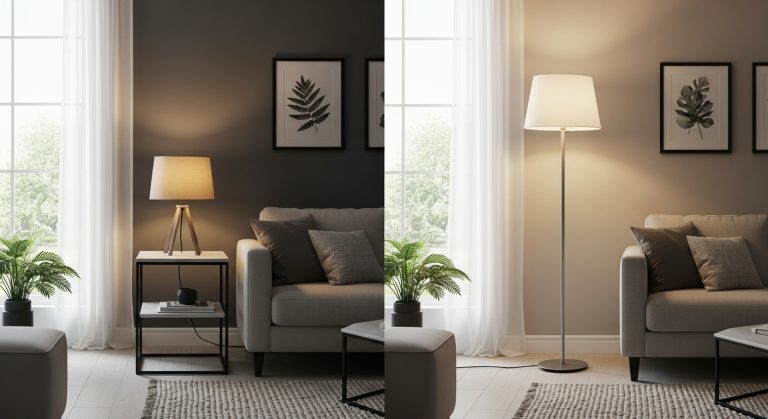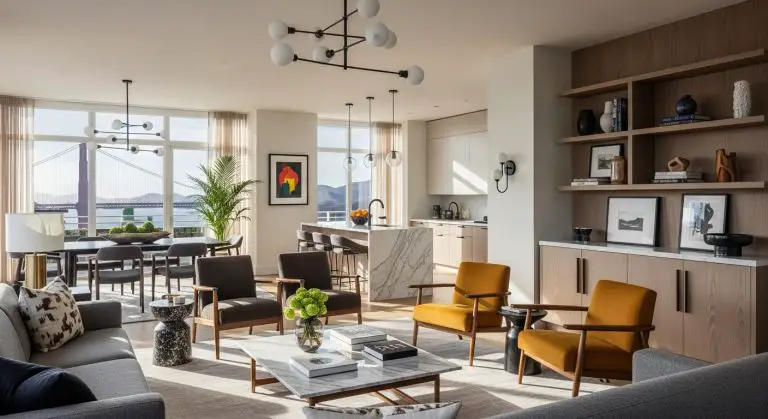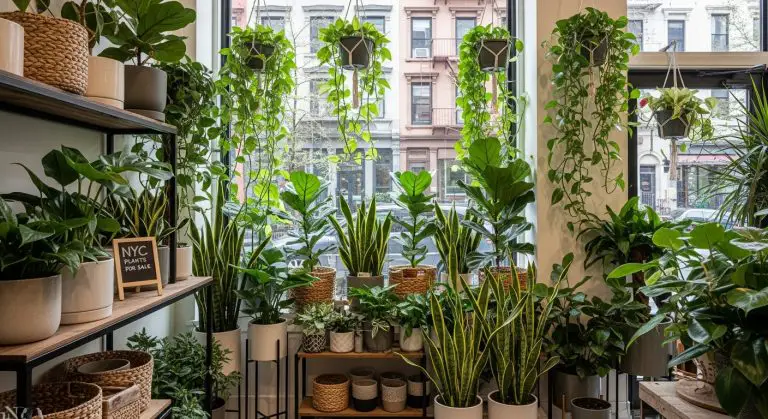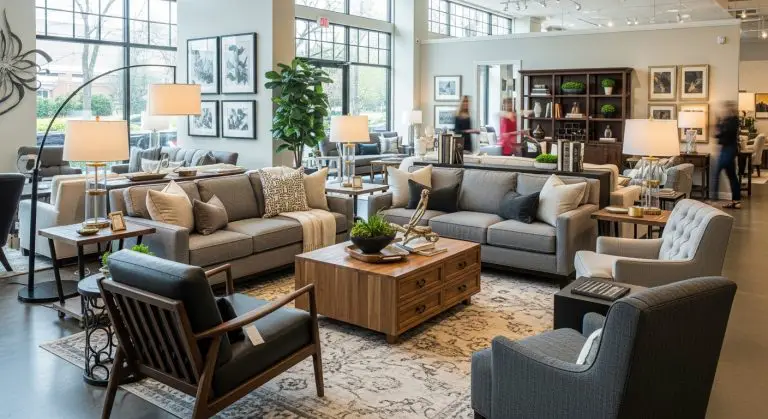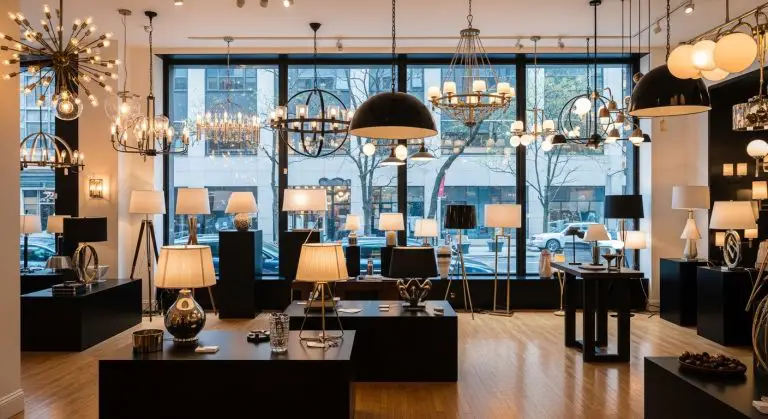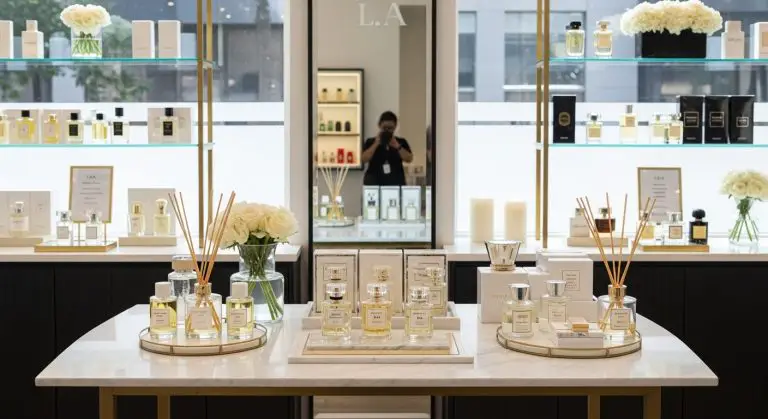How to Make a Small Room Look Bigger: Clever Tricks That Actually Work
Having a small room can feel like living in a shoebox. You know that moment when you walk into your bedroom or living room and think, “Is this a room or a glorified closet?” Yep, we’ve all been there.
The good news? You don’t need to knock down walls or call a contractor to fix it. With a few smart tricks, you can make any space feel more open, airy, and (dare I say) Instagram-worthy. Over the years, I’ve lived in my fair share of small apartments in busy cities, and I’ve had to learn every sneaky hack in the book for faking extra square footage. Today, I’ll spill the secrets with you.
So, grab a coffee and let’s dive into how to make a small room look bigger without going full HGTV renovation mode.
The Psychology of Space: Why Rooms Feel Smaller Than They Are
Before we get into the hacks, let’s geek out for a second. Ever notice how two rooms of the same size can feel totally different? That’s because our brains interpret space based on light, color, and layout, not just square footage.
- Dark colors absorb light, making walls feel closer.
- Clutter tricks the brain into thinking space is cramped.
- Light and mirrors make a room feel more expansive.
According to a study from the Journal of Environmental Psychology, humans perceive open, uncluttered spaces as more comfortable and less stressful. Translation? A few simple changes can make your tiny bedroom feel like a luxury suite.
1. Light Is Everything: Brighten Up Your Space
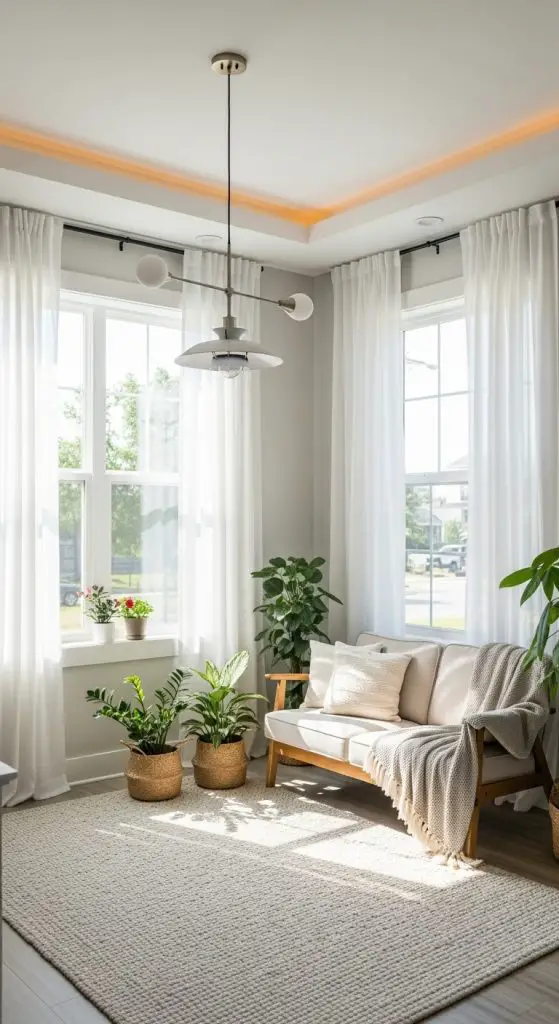
If you take one tip from this entire article, let it be this: light = space.
Natural Light
Open those curtains, ditch the heavy drapes, and let the sunshine in. Natural light not only makes a room feel bigger, but it also boosts your mood. (Who doesn’t want that?)
Artificial Lighting
If you’re lacking big windows, layer your lighting:
- Overhead light: A statement pendant or flush mount.
- Task lighting: Desk or bedside lamps.
- Accent lighting: Wall sconces, LED strips, or fairy lights for cozy vibes.
Pro tip: Skip the giant floor lamp if your floor space is limited. Wall-mounted options save space and look chic.
2. Color Magic: Paint Your Way to Spaciousness
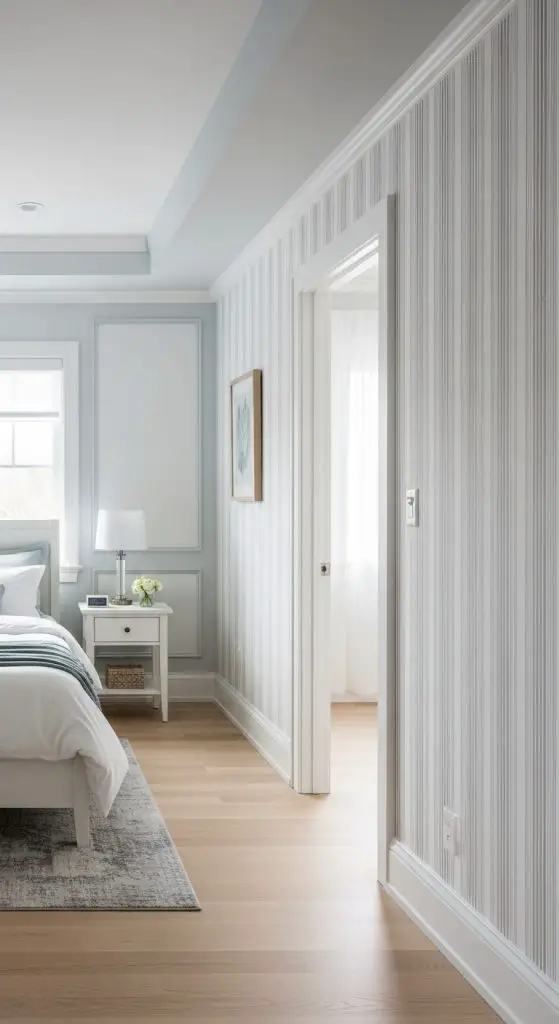
Colors are powerful—choose wisely and your room instantly feels larger.
- Go light: Whites, soft grays, pastels, and neutrals bounce light around the room.
- One color scheme: Stick to a monochromatic palette to avoid visual clutter.
- Ceiling hack: Paint your ceiling lighter than your walls to “raise” it.
And if you’re bold enough, try vertical stripes on your walls. Just like striped pants, they create an illusion of height. (Bonus: they never go out of style IMO.)
3. Mirrors: The Oldest Trick in the Book
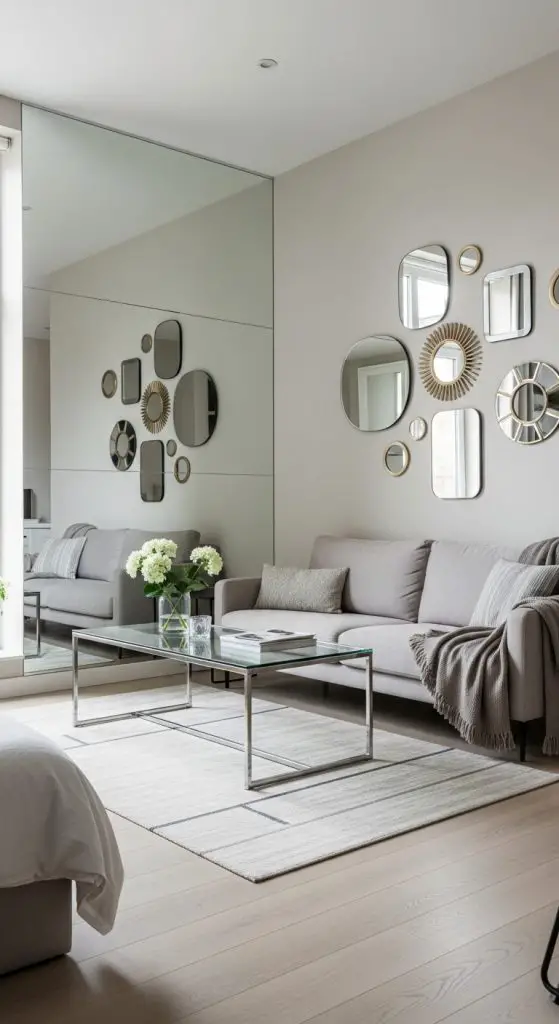
If you’ve ever walked into a fancy restaurant and thought, “Wow, this place is huge!”—surprise! It was probably mirrors.
Why Mirrors Work
Mirrors reflect both light and space, making rooms feel twice as big.
How to Use Them
- Place a large mirror opposite a window to maximize light.
- Use mirrored furniture like dressers or side tables.
- Hang multiple smaller mirrors in a gallery wall style for a fun, artsy vibe.
I once added a $40 oversized mirror from Amazon to my studio apartment, and suddenly it felt like I had an extra 100 square feet. Worth every penny.
4. Declutter Like Your Room Depends on It (Because It Does)

Here’s the harsh truth: clutter shrinks a room faster than anything else.
Why Decluttering Works
When your surfaces are crammed with stuff, your eyes have nowhere to rest. Clean lines and open spaces let your brain “breathe.”
Quick Declutter Tips
- Use hidden storage (ottomans, under-bed bins, baskets).
- Follow the “one in, one out” rule for decor items.
- Keep only what you use or love. (Yes, I’m channeling Marie Kondo here.)
Fun fact: According to Princeton University Neuroscience Institute, clutter literally competes for your attention, making you less productive. So cleaning up = more space + more focus.
5. Furniture Hacks: Size and Placement Matter

You don’t need miniature dollhouse furniture, but you do need scale and placement on your side.
Go for Multi-Functional Furniture
- Sofa bed → living room by day, bedroom by night.
- Storage ottoman → footrest + secret stash.
- Drop-leaf tables → expand when needed, tuck away when not.
Placement Tricks
- Pull furniture slightly away from walls. It creates depth.
- Use fewer, larger pieces instead of multiple small ones. (Sounds backward, but it works.)
- Keep traffic flow open. Don’t block pathways with chunky chairs.
6. Rugs: Define and Expand
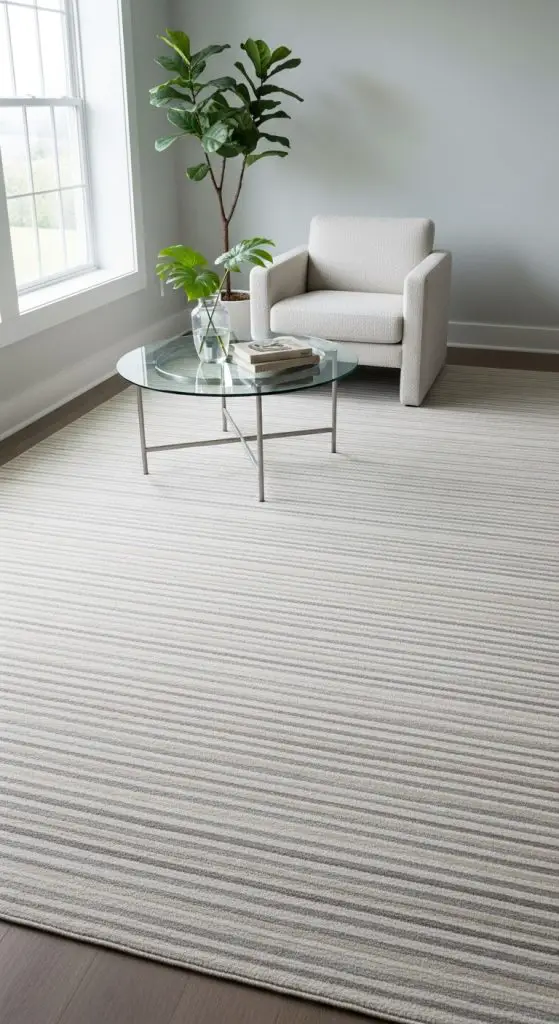
You might not think about rugs, but they’re game-changers.
- Big rugs = bigger room. A small rug chops up the floor visually.
- Stripes and geometric patterns can elongate the space.
- Neutral tones blend, while bold patterns can overwhelm.
Think of rugs as magic carpets. Only, instead of flying, they make your room look larger. 😉
7. Vertical Space: Use Those Walls!
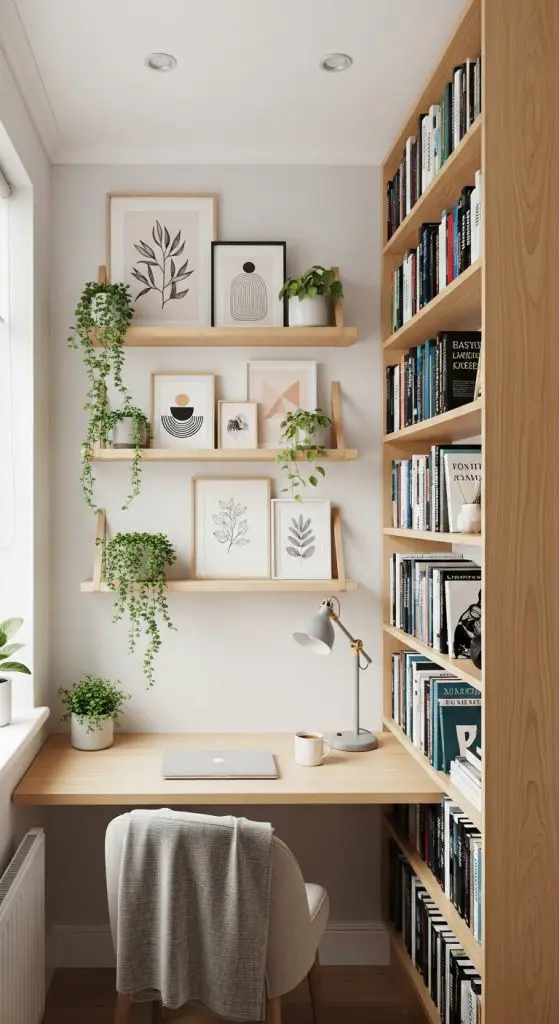
When your floor space is limited, the only way is up.
- Tall bookshelves draw the eye upward.
- Wall-mounted desks free up floor area.
- Floating shelves for decor and storage.
Ever notice how New York apartments with 10-foot ceilings look massive—even if the floor is tiny? That’s the power of vertical design.
8. Curtains: Hang ‘Em High
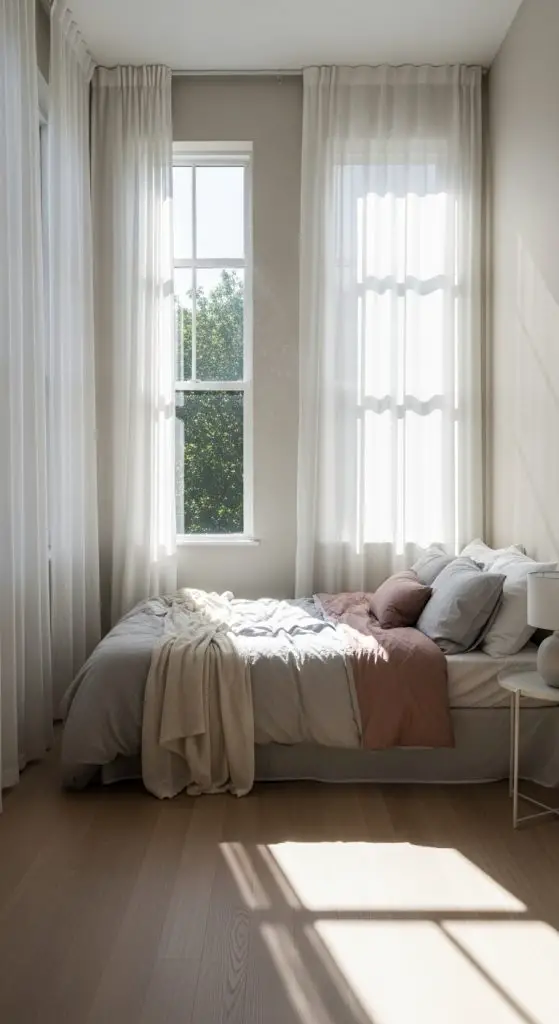
Don’t stop your curtains at the window frame. Hang them as high and wide as possible.
This trick elongates walls and makes windows look grander. Bonus: it lets in more natural light when curtains are open.
Pro tip: Match curtain color to your wall for a seamless, airy effect.
9. Glass and Lucite: The “Invisible” Furniture

Want furniture that takes up zero visual space? Go for glass or lucite.
- Glass coffee tables look stylish without crowding the room.
- Lucite chairs give seating without bulk.
They basically whisper, “I’m here, but I’m not taking up space.”
10. Patterns and Textures: Handle with Care
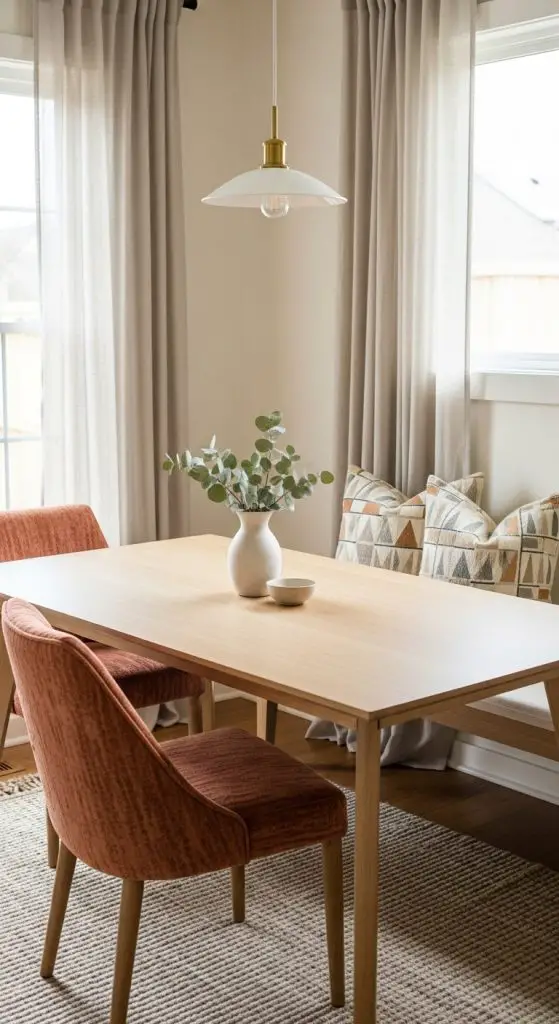
Patterns add personality, but in small rooms, less is more.
- Stick to smaller-scale patterns to avoid overwhelming.
- Mix textures (linen, velvet, wood) instead of loud prints.
- Use one statement wall or accent piece, not five.
11. Hidden Storage = Secret Weapon
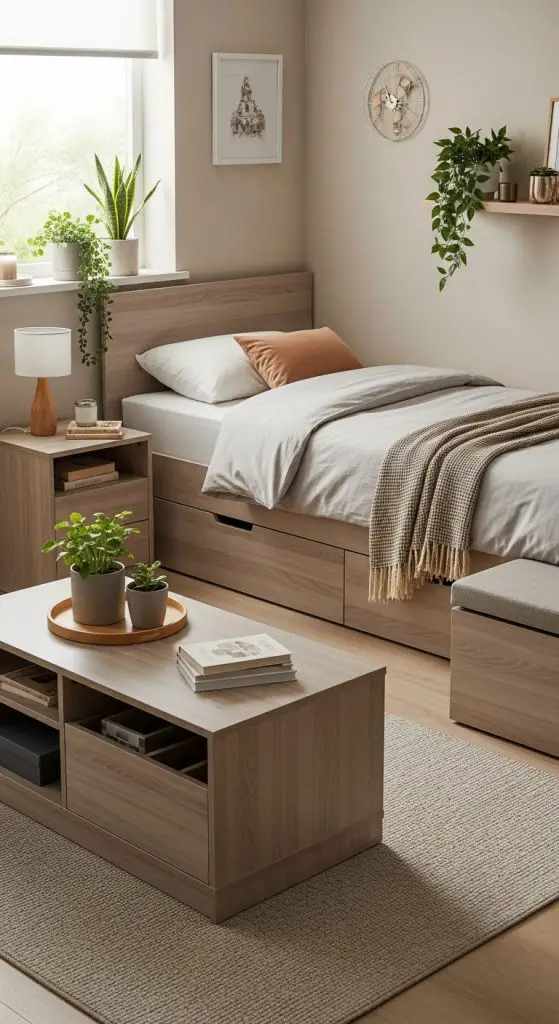
Small rooms need sneaky storage. Look for furniture with built-ins:
- Beds with drawers.
- Coffee tables with hidden compartments.
- Benches that open up.
Your future self will thank you when you can hide your mess in two seconds flat. 🙂
Common Mistakes That Make Rooms Feel Smaller
Let’s call out the culprits that sabotage your space:
- Oversized furniture that swallows the room.
- Dark paint everywhere without balance.
- Too much decor (yes, even if it’s cute).
- Blocking natural light with heavy drapes or bulky items.
If you avoid these, you’re already halfway to success.
Technology to the Rescue: AR Design Apps
Want to test layouts before moving furniture? Use AR apps like Houzz or IKEA Place. They let you see how furniture looks in your actual space.
It’s like playing The Sims but with your real living room.
Final Touches: Add Personality Without Overcrowding
Your space should still feel like you. Add personality through:
- A few statement art pieces instead of many small ones.
- Plants (vertical plant walls = chef’s kiss).
- Accent pillows or throws in bold colors.
Remember: curated > cluttered.
Conclusion: Your Small Room, Now Supersized
So there you have it—dozens of clever hacks on how to make a small room look bigger without touching a hammer or calling a contractor. From mirrors to light colors, multi-functional furniture to high-hanging curtains, the key is simple: trick the eye and keep it airy.
The best part? These changes don’t just make your room look bigger; they make it feel calmer, brighter, and way more inviting.
So, which trick will you try first? Personally, I’d start with decluttering—it’s free, and the results are instant. Then maybe add a giant mirror because, hey, we could all use more selfie opportunities. 😉

Sarah Johnson have over 15 years of experience in residential design, she specializes in creating stylish, functional spaces that feel like home. Her work has been featured in Better Homes & Gardens and Architectural Digest, and through HouzGem, she shares practical tips and inspiration to help readers transform their living spaces with confidence and creativity.

